Wood Bison
- December 29, 2023
- 0 comment
The Wood Bison, scientifically known as Bison bison athabascae, is a majestic and imposing mammal that belongs to the Bovidae family. This species is recognized for its robust build, distinctive hump over the shoulders, and long, curved horns, which can span up to three feet in length. Adult males, known as bulls, typically weigh between 900 to 2,000 kilograms, making them the largest terrestrial mammals in North America. The Wood Bison’s fur is characterized by a dense, dark brown coat, which provides insulation against the harsh climates of its habitat.
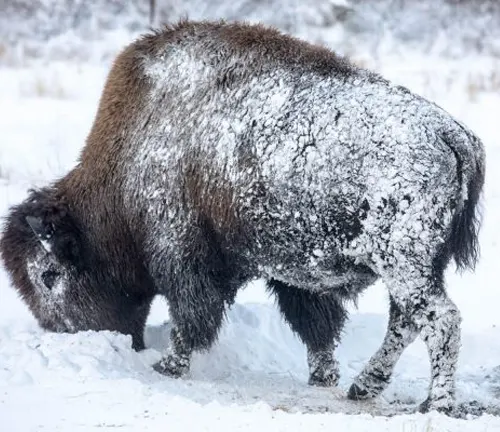
Found primarily in the boreal and subarctic regions of North America, the Wood Bison has a vast species range that extends across Alaska, Canada, and even into parts of Russia. Historically, these magnificent creatures roamed freely across the northern plains, forests, and tundra, forming large herds that played a crucial role in shaping the ecosystem. However, due to overhunting and habitat loss, the Wood Bison faced a dramatic decline in population during the 19th and early 20th centuries, leading to their near extinction.
Conservation efforts have been implemented to protect and revive the Wood Bison population, with successful reintroduction programs taking place in certain areas. Today, dedicated initiatives focus on restoring these iconic creatures to their natural habitats, promoting biodiversity, and ensuring the survival of this majestic species for future generations. The Wood Bison stands as a symbol of the delicate balance between wildlife conservation and human development, reminding us of the importance of preserving the natural world.
| Specification | Details |
|---|---|
| Scientific Name | Bison bison athabascae |
| Family | Bovidae |
| Weight (Adult Male) | 900 to 2,000 kilograms |
| Length | Approximately 3.5 to 3.8 meters |
| Height at Shoulder | Around 1.8 to 2 meters |
| Horn Length | Up to 3 feet |
| Coat Color | Dark brown |
| Range | Boreal and subarctic regions of North America, including Alaska, Canada, and parts of Russia |
| Habitat | Plains, forests, and tundra |
| Conservation Status | Near Threatened (IUCN Red List) |
| Notable Feature | Distinctive hump over the shoulders |
A Comprehensive Exploration
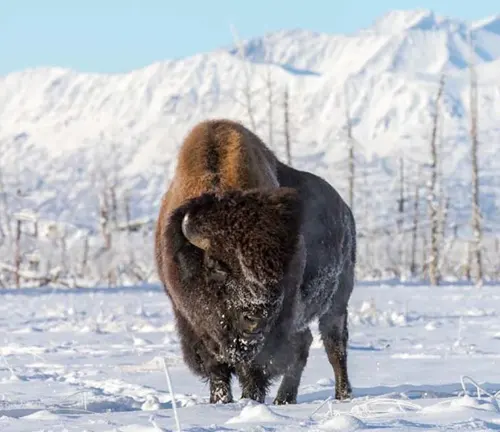
General Biology
The Wood Bison, scientifically known as Bison bison athabascae, is a captivating symbol of North America’s vast wilderness. With a robust build, a distinctive hump over its shoulders, and long, curved horns, this species belongs to the Bovidae family and holds the title of the continent’s largest terrestrial mammal. The dense, dark brown coat of fur provides insulation against the harsh climates of its habitat, making the Wood Bison a remarkable example of adaptation to its environment.
Reproduction
In the intricate tapestry of Wood Bison life, reproduction is a crucial chapter. These majestic creatures follow a seasonal mating pattern, typically occurring in late summer or early autumn. The gestation period lasts around nine months, and calves are born in late spring or early summer. Female Wood Bison, known as cows, are attentive mothers, and fiercely protective of their offspring. The reproductive cycle of the Wood Bison plays a vital role in maintaining the population and ensuring the survival of the species.

Behavior
Wood Bison exhibit complex social behaviors, often forming large herds that contribute to the dynamic nature of their communities. These herds are characterized by a hierarchy, with dominant individuals assuming leadership roles. During the mating season, bulls engage in fierce competitions, showcasing their strength and prowess to attract potential mates. The Wood Bison’s behavior is a fascinating blend of social dynamics and individual strength, essential for their survival in the wild.
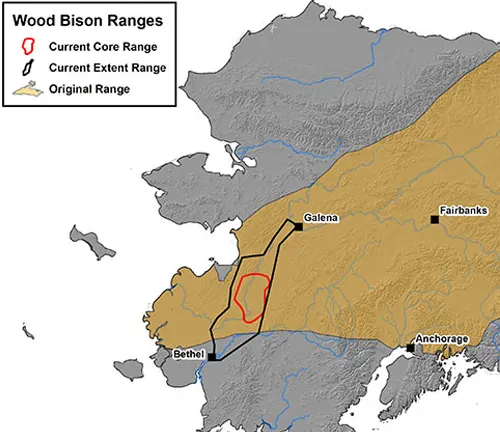
Habitat
The Wood Bison’s habitat spans the expansive boreal and subarctic regions of North America. From the northern plains to the dense forests and vast tundra, these creatures have adapted to a diverse array of ecosystems. However, human encroachment and habitat loss have challenged the Wood Bison’s traditional range, emphasizing the importance of conservation efforts to preserve these vital habitats for the species.
Food Habits
As herbivores, Wood Bison play a crucial role in shaping their ecosystem. Their diet consists mainly of grasses, sedges, and other vegetation found in their natural habitat. This selective grazing behavior sustains the Wood Bison and influences the composition and structure of the plant communities in their range.
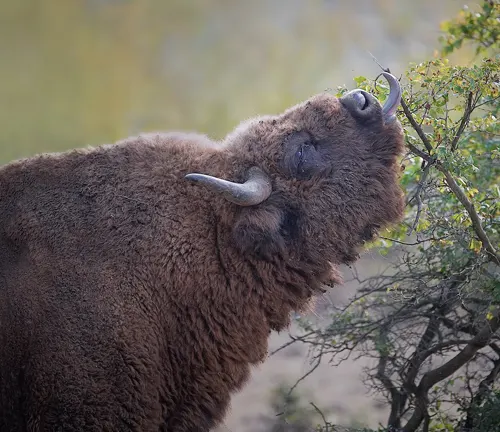
Voice, Sounds, Tracks, and Signs
Wood Bison communicates through a variety of vocalizations and body language. While they are not known for loud vocalizations, snorting and grunting sounds convey messages within the herd. Additionally, tracks and signs, such as wallowing areas and well-trodden paths, provide insights into their movements and behaviors. Understanding these subtle cues is crucial for researchers and conservationists studying the Wood Bison in their natural environment.
Distribution
The Wood Bison’s distribution is a testament to their historical resilience and adaptability. Once ranging widely across North America, from Alaska to Canada and even into parts of Russia, their population faced a severe decline due to overhunting and habitat loss. Conservation efforts, including successful reintroduction programs, aim to restore the Wood Bison to their native habitats, highlighting the ongoing commitment to preserving this iconic species.
Different Species
Plains Bison
(Bison bison bison)
The Plains Bison, also known as the Bison bison bison, is the other subspecies of the American Bison. Historically, it inhabited the grasslands and plains of North America, from Mexico to Canada. This subspecies is slightly smaller than the Wood Bison and has a more extensive historical range.
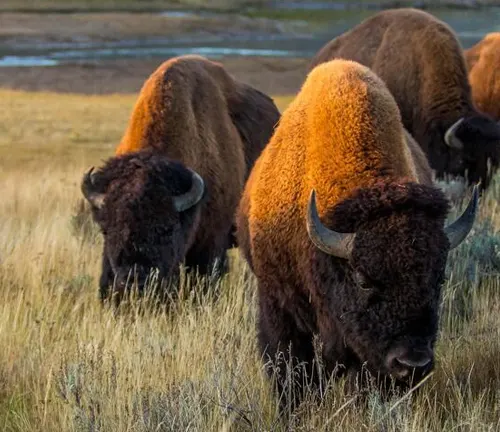
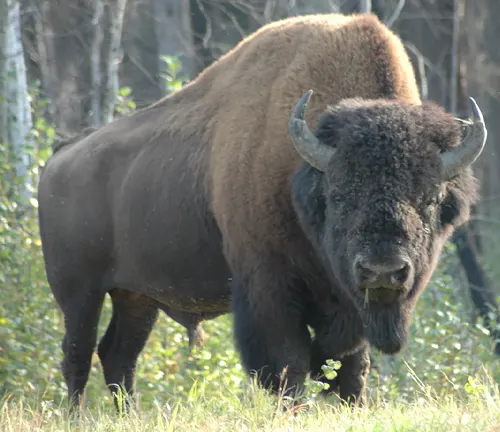
Wood Bison
(Bison bison athabascae)
The Wood Bison, or Bison bison athabascae, is specifically adapted to the boreal and subarctic regions of North America. It is characterized by its larger size, particularly the size of its hump and horns, as well as its dark brown, dense fur. Wood Bison are associated with northern forests, tundra, and colder climates.
Frequently Asked Questions (FAQs)
- What is a Wood Bison?
The Wood Bison (Bison bison athabascae) is a subspecies of the American Bison, specifically adapted to the boreal and subarctic regions of North America. - How is the Wood Bison different from other bison?
Wood Bison are larger than other subspecies, such as the Plains Bison, with distinctive features like a pronounced hump and longer horns. They are adapted to colder climates. - Where do Wood Bison live?
Wood Bison inhabit northern plains, forests, and tundra, primarily in Alaska and Canada. Historically, their range extended into parts of Russia. - What is the conservation status of Wood Bison?
Wood Bison are classified as “Near Threatened” on the IUCN Red List. Conservation efforts aim to protect and restore their populations, including successful reintroduction programs. - How do Wood Bison contribute to ecosystems?
As herbivores, Wood Bison play a vital role in shaping their ecosystems by influencing vegetation through selective grazing. They are considered a keystone species. - What are the main threats to Wood Bison?
Overhunting and habitat loss have been significant threats to Wood Bison populations. Conservation efforts focus on mitigating these threats and preserving their natural habitats. - Are there different populations of Wood Bison?
Yes, there are distinct populations, and efforts are made to manage and monitor these populations separately. Reintroduction programs aim to establish sustainable populations in various regions. - How do Wood Bison reproduce?
Wood Bison follow a seasonal mating pattern, with calves typically born in late spring or early
summer after a gestation period of around nine months. Female bison are attentive mothers. - Do Wood Bison make vocalizations?
While not known for loud vocalizations, Wood Bison communicate through snorting and grunting sounds. They also use body language and engage in social behaviors within their herds. - How can I support Wood Bison conservation?
Supporting conservation organizations, staying informed about Wood Bison populations and their habitats, and promoting sustainable practices are ways to contribute to their conservation.


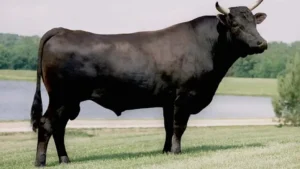
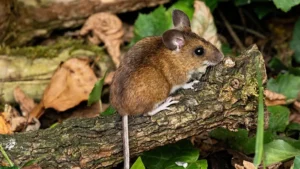

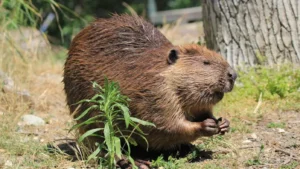


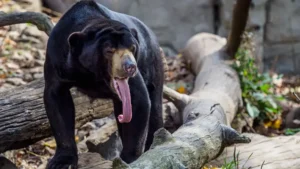

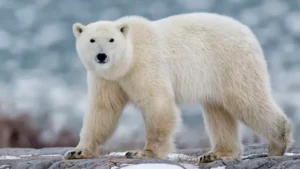
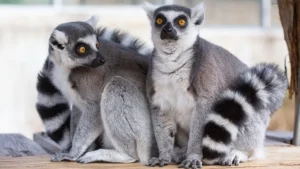

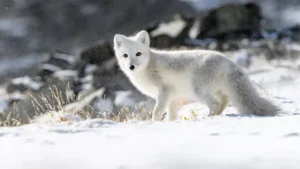
Leave your comment